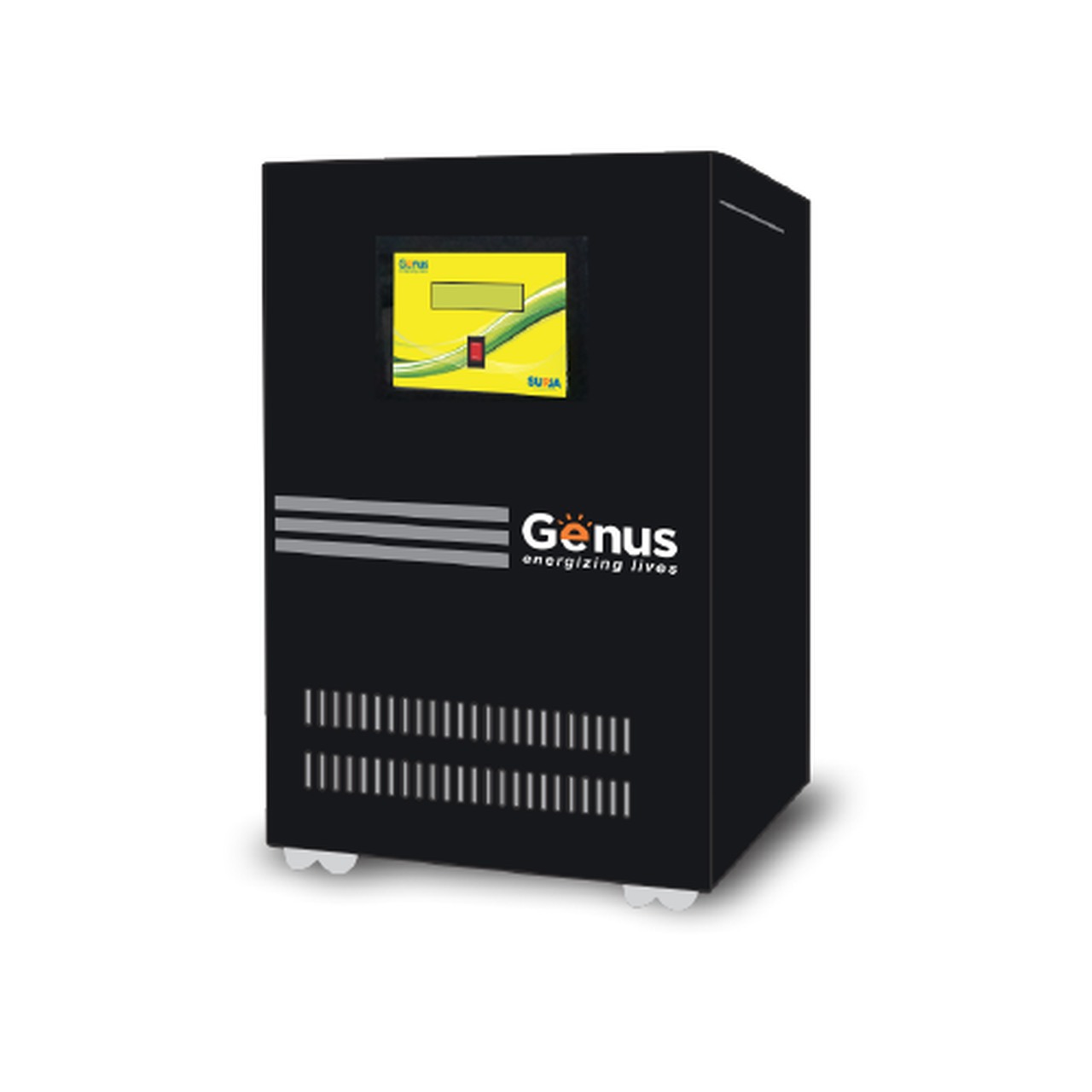How power Inverters in Nigeria Work
How power Inverters in Nigeria Work
To clarify what an inverter is, it essential for people to appreciate why this vital device seems to be in use for various applications. An inverter converts the direct current or DC electricity from sources such as batteries or fuel cells to alternating current (AC) electricity. The inverter's design is to produce any voltage. In particular, it can operate alternating current equipment designed for mains operation, or rectified to provide a direct current of any voltage desired for specific applications.
Inverters can play a crucial role in any solar energy system, and they are critical in most projects. An inverter's primary function is to convert direct current (DC) output into alternating current (AC). AC is the standard used by all commercial appliances.
Transistors are vital components of power inverters, which converts direct current (DC) to alternating current (AC) power. The use of transistors is to change the steady voltage and one-way. A current flow of DC to the continually changing voltage and oscillating current of AC. Transistors are used as switches to control electrical flow through a circuit. The transistor's key feature in the generation of AC power is that it rapidly switches on and off. A pair (or more) of transistors are used in tandem with a transformer to make the conversion. Direct current power feed into transistors on both sides of the transformer input and those transistors alternately switch on and off, which creates alternating current.
inverter technologies have advanced significantly. In addition to converting DC to AC, they provide several other services to ensure that the inverter can operate at an optimal performance level, such as advanced utility controls, applications, and system design engineering. Inverter manufacturers also provide post-installation services integral to maintaining energy production and a high level of performance for the project, including preventive maintenance and a quick mean time to repair (MTTR).
Most companies have been able to make modifications to manufacturing strategies and build additional manufacturing facilities within emerging solar markets. Additionally, companies have taken the core concept of "design for manufacturability"—meaning they design a product with ease of manufacturing in mind—to design inverter products that are quicker and cheaper to produce, without sacrificing performance. Inverter manufacturers have also been able to achieve lower-cost success through well-maintained partnerships with vendors.
A power inverter can be entirely electronic or maybe a combination of mechanical effects (such as a rotary apparatus) and electronic circuitry. Today's modern inverters are more diverse in design with added features such as USB interfaces, ethernet, and more. The main purpose is to ensure they are user-friendly, versatile, and enable users to use remote control.
Use of Power Inverters in Nigeria
Due to power disruption in Nigeria, most homes have an inverter connected to deep cycle batteries. An inverter produces an uninterrupted 220V AC or 110V AC (depending on the line voltage of the particular country) supply to the device connected as the load at the output socket. The inverter gives constant AC voltage at its output socket when the AC mains power supply is not available.
We will take a look at how the inverter makes this possible. To understand how the inverter works, we
consider in the following situations.
- When the AC mains power supply is available.
- When the AC mains power supply is not available.
AC mains Power supply is available.
When the AC mains supply is available, the AC mains sensor senses it, and the supply goes to the Relay and battery charging section of the inverter. AC primary sensor activates a relay, and this Relay will directly pass the AC mains supply to the output socket. The line voltage in this situation will drive the load. Also, the line voltage connects to the battery charging section. The line voltage converts to a DC voltage(12V DC or 24V DC usually), then regulated, and the battery starts to charge. There are individual circuits for sensing the battery voltage, and when the battery fully charges, the charging stops. In some inverters, there will be a trickle charging circuit which keeps the battery always at full charge.
AC mains power supply is not available.
When the AC mains power supply is not available, an oscillator circuit inside the inverter produces a 50Hz MOS drive signal. This MOS drive signal will be amplified by the driver section and sent to the output section.MOSFETs or Transistors do all the switching operations. These MOSFETs or Transistors connects to the primary winding of the inverter transformer. When these switching devices receive the MOS drive signal from the driver circuit, they start to switch between ON & OFF states at a rate of 50 Hz. This switching action of the MOSFETs or Transistors causes a 50Hz current to the primary of the inverter transformer: results in a 220V AC or 110V AC. (This depends on the winding ratio of the inverter transformer) at the secondary or the inverter transformer. This secondary voltage is made available at the output socket of the inverter by a changeover relay.
There is a lot of automation in inverters used in Nigeria.
Inverter contains various circuits to automatically sense and tackle different situations that may occur when the inverter is running or in standby. This automaton section looks after conditions such as overload, overheat,low battery, overcharge, etc. Respective of the situation, the automation section may switch the battery to charging mode or switch OFF. The various conditions indicate to the operator utilizing glowing LEDs or sounding alarms. In advanced inverters, LCD screens use helps to show the situations visually.

As inverters become more advanced and continuously reach enhanced performance levels, these devices are being created in smaller, more practical models as usage is becoming more commonplace.The continued challenge of providing higher and higher value at a lower cost is something the industry must work to overcome.
Given the growth in distributed generation projects along with continued development of utility-scale projects, solar project developers are seeking inverter manufacturers that can provide a robust suite of commercial products and technology topologies. A flexible inverter manufacturer can offer a centralized and decentralized inverter design. It refers to an architecture that uses multiple inverters throughout a project to achieve the lowest level cost of energy (LCOE) possible. Although there's still growing demand for a standard system architecture using a centralized inverter, designing in three-phase string inverters for a decentralized PV system design is gaining popularity. Centralized inverters are particularly crucial for commercial applications where space is at a premium.
Inverters have evolved from much more than merely inverting the electrical currents of a solar energy system. Inverters must continue to innovate and bring down costs while maintaining critical attributes for a solar energy system (reliability, efficiency, and features such as data monitoring), to drive more PV penetration.
High PV penetration and its impact on our aging electric grid is another challenge the entire solar industry faces. The problem itself is not specific to inverters, but the solution may be entirely inverter-driven. Because inverters serve as a gateway to the system, advanced utility controls, such as low-voltage ride-through, can help mitigate the issues that stem from higher PV penetration on the grid, such as predictability of output and distributed generation. These functions help ease the transition as they build more solar, without the need for significant and expensive infrastructure upgrades. Utilities are keen to support the development and use of inverters with the most proven functionalities when it comes to grid interconnection.
Kindly contact GZ Industrial Supplies for your inverters, batteries, and electronic appliances in Nigeria.
Recent Posts
-
How to Choose the Right Industrial Cleaning Service Provider
Key takeawayThoroughly Assess Your Needs and Providers: Understand your specific industrial cle …Jul 26, 2024 -
Floor Paint Maintenance: How to Keep Your Floors Looking Their Best
Maintaining your painted floors is essential for preserving their beauty and extending their lifespa …Jul 25, 2024 -
The Best Floor Paint for Different Types of Flooring
When it comes to revitalizing your home's flooring, choosing the right paint can make all the d …Jul 19, 2024


